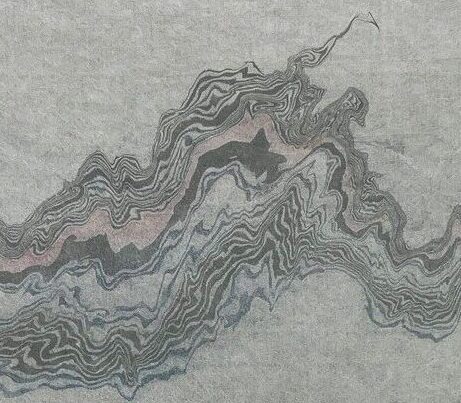These are the tools I have been using for my suminagashi work:
Trays
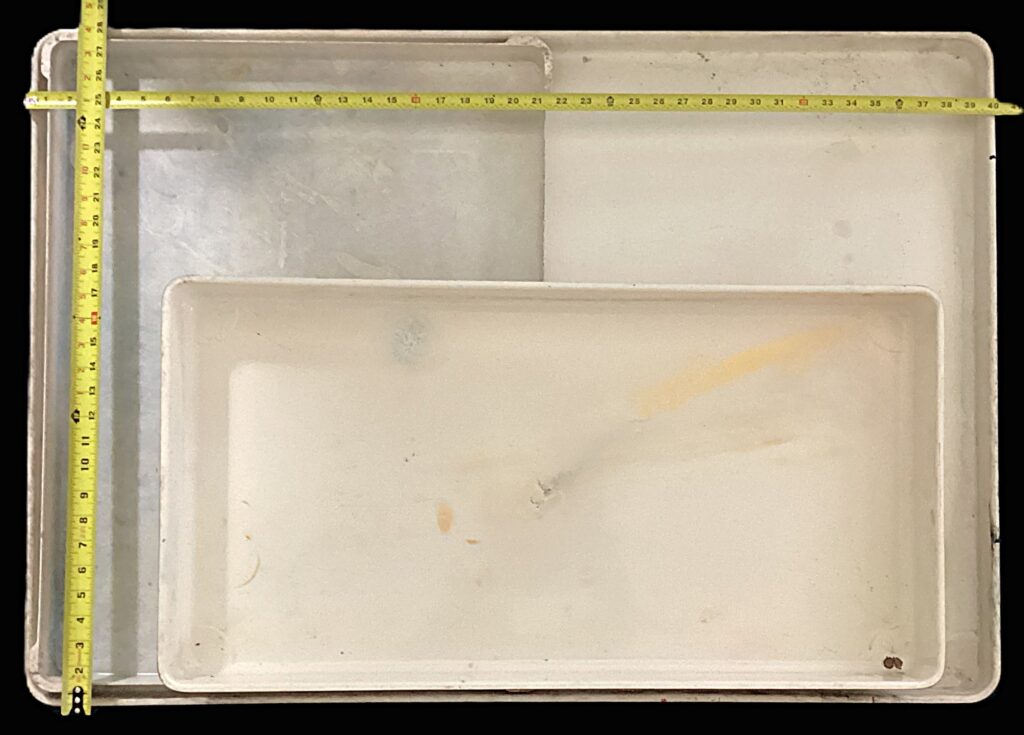
I prefer to use a large and shallow tray, even for relatively small papers and use, at most, about 1/2-3/4 inch of water in the tray. This combination keeps the water movement and air current impacts to a minimum and gives the most room to shift and manipulate the pattern.
Brushes

Relatively inexpensive sumi brushes will work well, no particular requirements other than that they maintain a point when wet; these are #2 size.
Paint/Ink
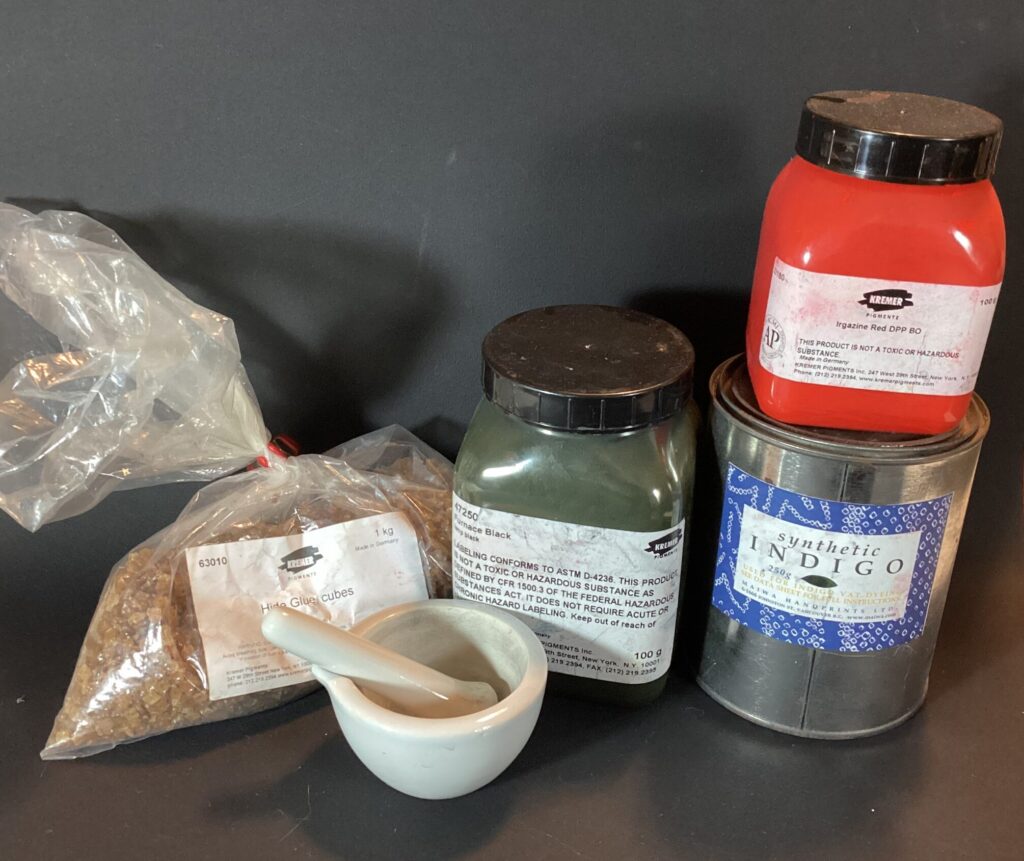
Over the years I have experimented with many different paints and inks but found I have the best control and consistency when I make my own. Many pigments will not work well, but lamp black and indigo (I prefer genuine but it is very granular and hard to grind) are classic pigments and irgazine red is a good match to the red used during the Edo and later periods. The key, I found, is to use a fairly weak binder -too much hide glue causes the lines to break apart when compressed.
Dispersant
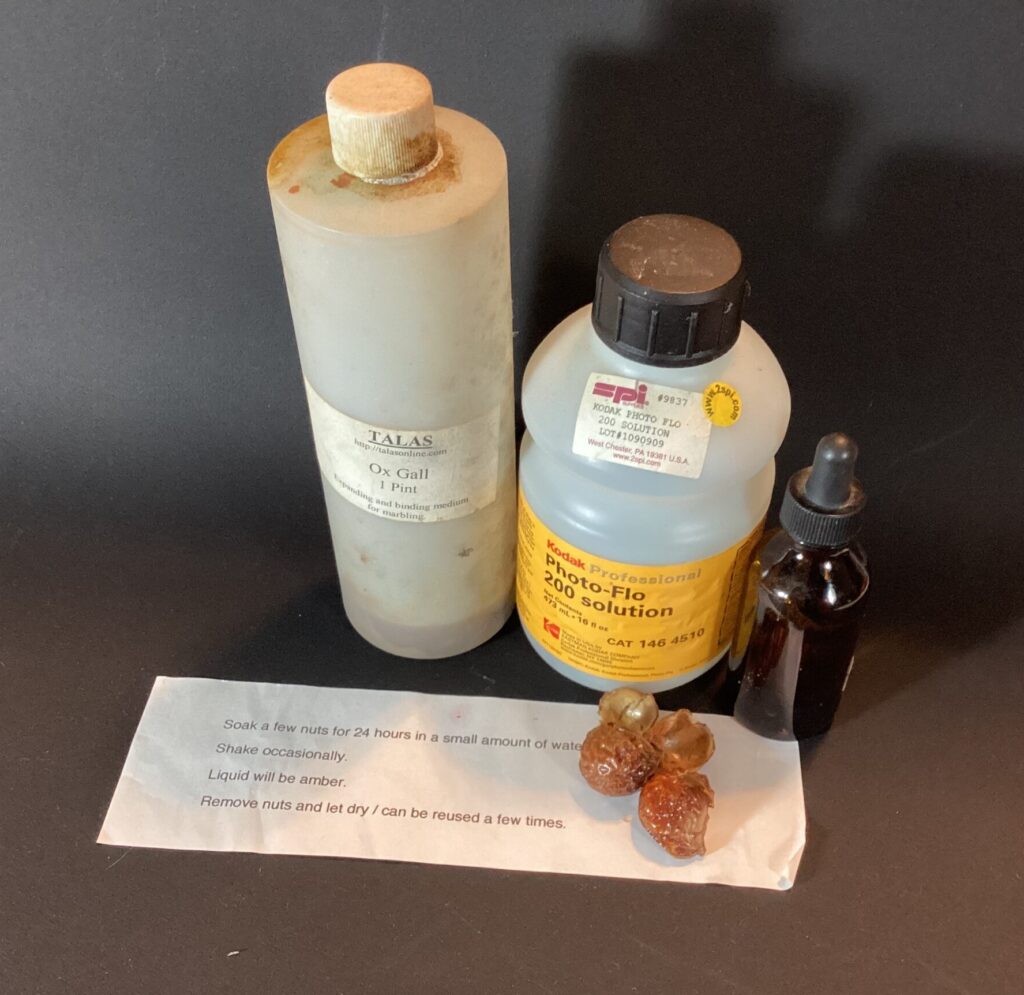
Any number of surfactant/wetting agents can be used – traditionally it was pine-based, later soap berry (shown here). I have used diluted ox-gall but have found diluted photo-flo most reliable and that is what I generally use.
Paper
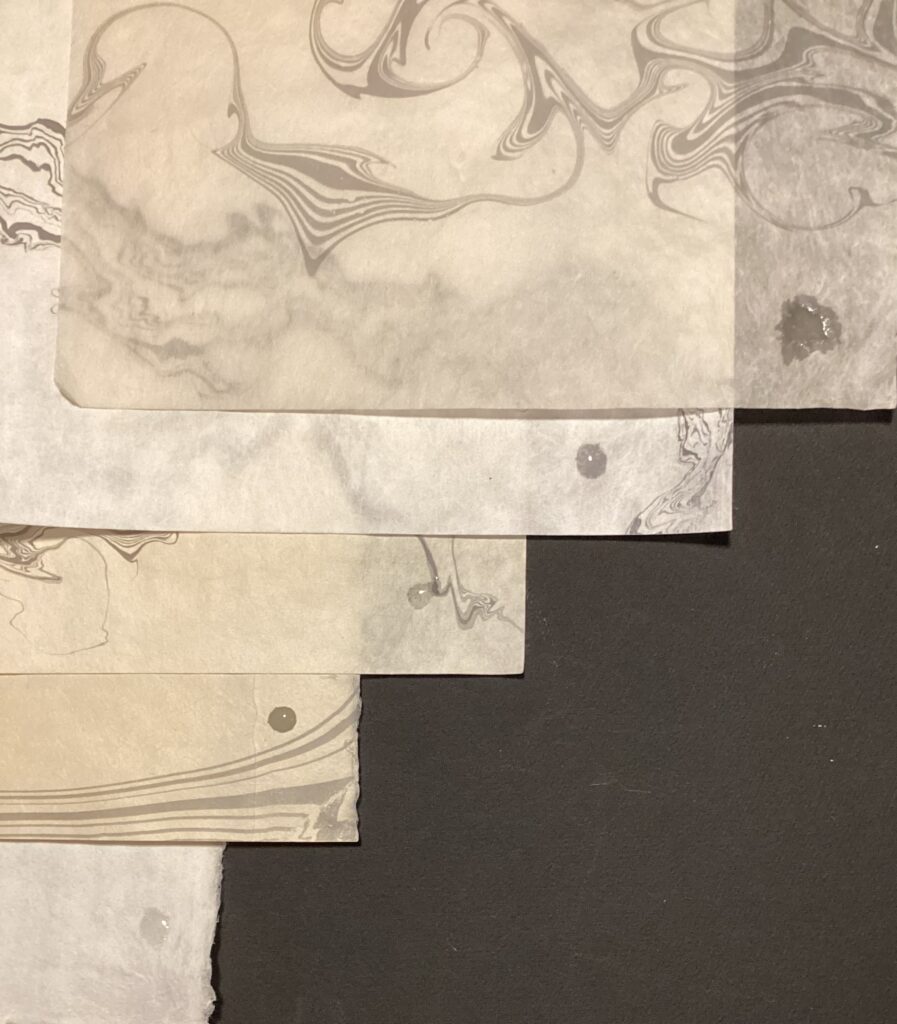
The key to paper is its absorbency so usually an unsized paper will work best. I use a variety of Japanese papers, both handmade and machine made. I use a drop test on a corner of the paper: if a drop of dispersant is absorbed and spreads moderately rapidly the paper will usually work well. The slower the rate of absorption, the harder it will be for the paper to absorb the pigments, often marring the design and poor transfer to the paper (also, a too rapidly absorbing paper can cause problems as well). In the photo above papers 1, 2, 4, then #3 worked and best in that order. #5 (lowest) was very poor for suminagashi, absorbed the ink minimally, slowly (Hosho student grade paper) – and you can see that the drop of dispersant just sits on the surface of the paper. The third paper was a lightly sized paper so absorption was slow but still did pick up the ink reasonably well. The longer it takes, however, the greater the chance of shifting the pattern when laying down the paper, or having it tear when lifting it off the water. Western papers, being heavily sized work poorly, and require surface treatment with alum. There is a difference in appearance with unsized and sized papers – unsized giving a softness, three-dimensionality and depth to the pattern that is lacking in the purely surface-adhering sized/alumed papers.
